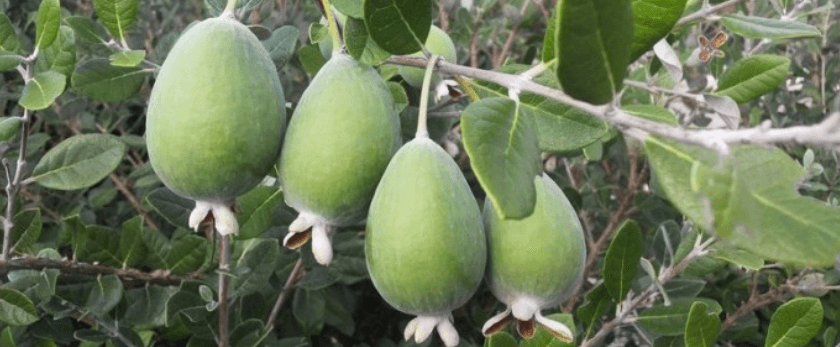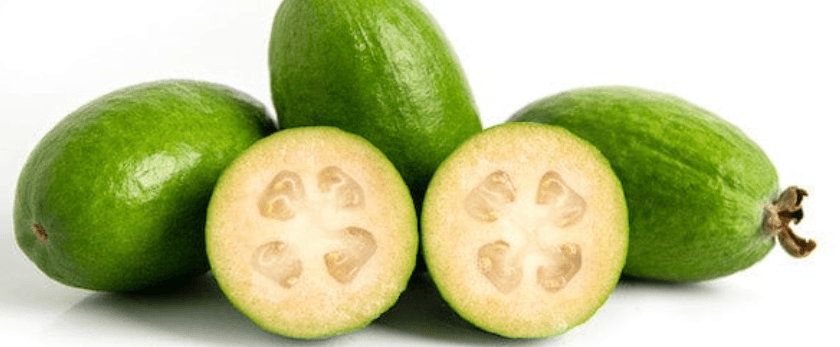Feijoa, also known as pineapple guava, is a delicious and nutritious fruit that is native to South America. It is a popular choice for home gardens due to its low maintenance and high yield. In this article, we will discuss how to grow feijoa and provide tips for caring for this versatile plant.
Watering
Feijoa plants require regular watering, especially during the first year of growth. The soil should be kept consistently moist, but not waterlogged. A good rule of thumb is to water deeply once a week, rather than shallowly every day. This will encourage the roots to grow deeper and make the plant more drought-resistant.
During hot and dry weather, it is important to increase the frequency of watering. Feijoa plants are sensitive to drought and may drop their fruit prematurely if not watered enough. However, be careful not to overwater as this can lead to root rot.
Light
Feijoa plants thrive in full sun to partial shade. They require at least 6 hours of direct sunlight per day to produce fruit. If you live in a hot climate, it is best to provide some afternoon shade to protect the plant from scorching.
If you are growing feijoa indoors, make sure to place it near a sunny window or provide artificial grow lights. Lack of sunlight can result in poor growth and fruit production.
Soil
Feijoa plants prefer well-draining, slightly acidic soil with a pH of 5.5-6.5. If your soil is too alkaline, you can add sulfur or peat moss to lower the pH. It is also recommended to mix in some organic matter, such as compost or aged manure, to improve the soil's fertility and structure.
Fertilizer
Feijoa plants are light feeders and do not require much fertilizer. However, a balanced fertilizer, such as a 10-10-10, can be applied in early spring and again in mid-summer to promote healthy growth and fruit production. Avoid using high-nitrogen fertilizers as they can result in excessive leaf growth and reduce fruit production.
Pruning
Pruning is an essential part of caring for feijoa plants. It helps to maintain the plant's shape, promote air circulation, and increase fruit production. The best time to prune feijoa is in late winter or early spring before new growth appears.
Start by removing any dead, damaged, or diseased branches. Then, thin out the interior branches to allow more sunlight and air to reach the center of the plant. Finally, prune back the tips of the branches to encourage new growth and fruiting.

Best Time to Grow Feijoa
Feijoa plants can be grown year-round in tropical and subtropical regions. In temperate climates, it is best to plant feijoa in the spring after the last frost. This will give the plant enough time to establish its roots before the colder months.
Common Problems with Feijoa
Feijoa plants are generally pest and disease resistant. However, they can still face some common problems that can affect their growth and fruit production.
Fruit Drop
One of the most common problems with feijoa is fruit drop. This can be caused by a lack of pollination, drought, or excessive heat. To prevent fruit drop, make sure to water regularly and provide some shade during hot weather. You can also hand-pollinate the flowers using a small paintbrush to ensure proper pollination.
Pests
Feijoa plants can be attacked by various pests, including aphids, mealybugs, and scale insects. These pests can cause damage to the leaves and fruit, and in severe cases, can weaken the plant. To control these pests, you can use insecticidal soap or neem oil. It is also helpful to attract beneficial insects, such as ladybugs and lacewings, to your garden to naturally control pest populations.
Diseases
Feijoa plants are susceptible to fungal diseases, such as leaf spot and fruit rot. To prevent these diseases, make sure to water at the base of the plant and avoid getting the leaves wet. Proper pruning and air circulation can also help prevent fungal diseases.
Conclusion
Feijoa is a versatile and easy-to-grow plant that can provide delicious fruit for your family. By following these tips for caring for your feijoa plant, you can ensure a healthy and productive harvest. Remember to water regularly, provide enough sunlight, and prune your plant to promote growth and fruit production. With a little bit of effort, you can enjoy the tasty and nutritious feijoa fruit straight from your own garden.










